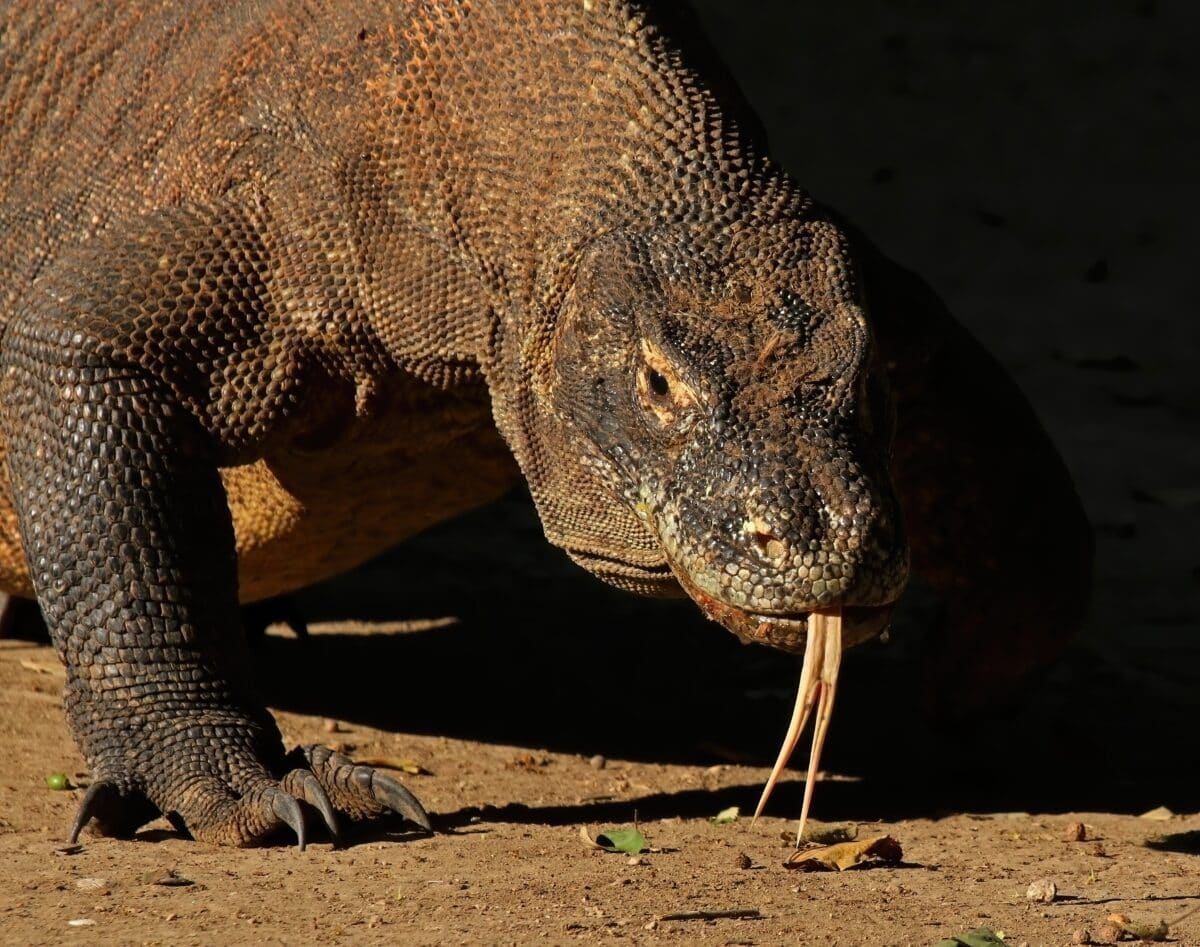The Komodo dragon (Varanus komodoensis) stands as the world’s largest living lizard, an apex predator that dominates its native Indonesian island habitats. Growing up to 10 feet long and weighing over 300 pounds, these remarkable reptiles have earned their fearsome reputation through their hunting prowess, powerful jaws, and unique feeding adaptations. Unlike many predators that tear their prey into manageable pieces, Komodo dragons are capable of consuming surprisingly large animals whole, thanks to their expandable jaws, flexible skulls, and specialized digestive systems.
What makes these prehistoric-looking creatures even more fascinating is their hunting strategy. Armed with serrated teeth, powerful neck muscles, and a mouth harboring toxic bacteria, Komodo dragons can dispatch prey much larger than themselves. However, not all potential meals submit easily. While many smaller creatures stand no chance against a hungry Komodo, certain animals have evolved defensive mechanisms or possess sufficient size and strength to resist becoming a dragon’s dinner. This article explores both categories: the unfortunate creatures that Komodo dragons can swallow whole and the resilient animals that can fight back against these formidable predators.
1. Goats: A Common Whole Meal

Domestic and wild goats represent one of the Komodo dragon’s favorite meals across their island territories. Medium-sized goats weighing up to 50 pounds can be consumed whole by adult Komodo dragons after being ambushed and overpowered. The dragon’s hunting technique typically involves a swift, powerful bite to the leg or underbelly, followed by the release of toxic bacteria and venom components that eventually weaken and kill the prey. Once the goat succumbs, the Komodo’s expandable jaw unhinges to accommodate the entire animal.
Researchers have documented the Komodo’s remarkable ability to consume up to 80% of their body weight in a single feeding session. After swallowing a goat whole, a Komodo dragon may not need to feed again for several weeks as its highly acidic stomach slowly breaks down everything—including bones, hooves, and horns. This feeding efficiency explains why local Indonesian farmers must carefully protect their livestock from these predators, as a single Komodo can decimate small herds over time.
2. Wild Pigs: A Protein-Rich Target

Wild pigs and boars, particularly younger specimens, frequently fall prey to hungry Komodo dragons. These omnivorous mammals, weighing between 30-70 pounds, roam the same territories as the dragons and often become targets when they visit water sources. Komodo dragons employ ambush tactics, lying in wait along game trails or near water holes before launching lightning-fast attacks. Adult wild pigs present more of a challenge due to their tusks and aggressive nature, but younger pigs can be overpowered and consumed whole relatively easily.
The consumption process for a pig is particularly impressive to witness. The Komodo’s throat and stomach expand dramatically as the animal is swallowed head-first. Their digestive system contains powerful enzymes that can dissolve the pig’s tough hide and bones within days. Biological studies have revealed that Komodo dragons have specialized stomach valves that prevent regurgitation during this lengthy swallowing process, allowing them to consume prey that might seem impossibly large for their body size.
3. Monkeys: Arboreal Prey That Can’t Escape
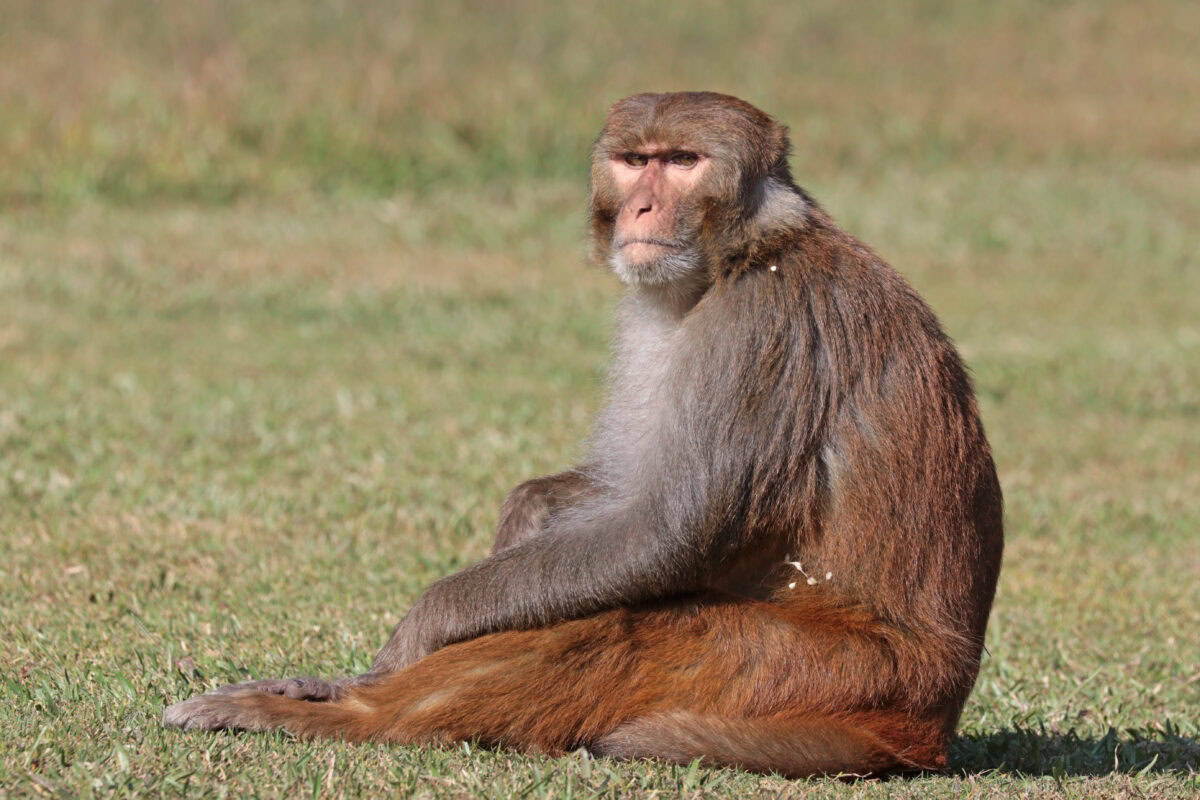
Despite their tree-dwelling habits, various monkey species native to the Indonesian islands occasionally fall victim to Komodo dragons. Young macaques and langurs weighing up to 15 pounds can be swallowed whole when they descend to the ground for water or food. While adult Komodo dragons aren’t proficient climbers, they demonstrate remarkable patience, waiting beneath fruit trees for hours until an unwary monkey comes within striking distance. Their camouflaged coloration and ability to remain motionless make them nearly invisible to potential prey.
The consumption of primates demonstrates the Komodo’s opportunistic feeding strategy. Though monkeys aren’t their primary prey, these intelligent mammals represent a nutrient-dense meal when caught. Observations have shown that Komodo dragons can detect monkey troops from significant distances, likely following their distinct vocalizations and scent trails. Once captured, the monkey’s relatively small size makes it an easy meal to consume whole, with even the tail disappearing into the dragon’s maw within minutes of the initial capture.
4. Monitor Lizards: Cannibalistic Consumption
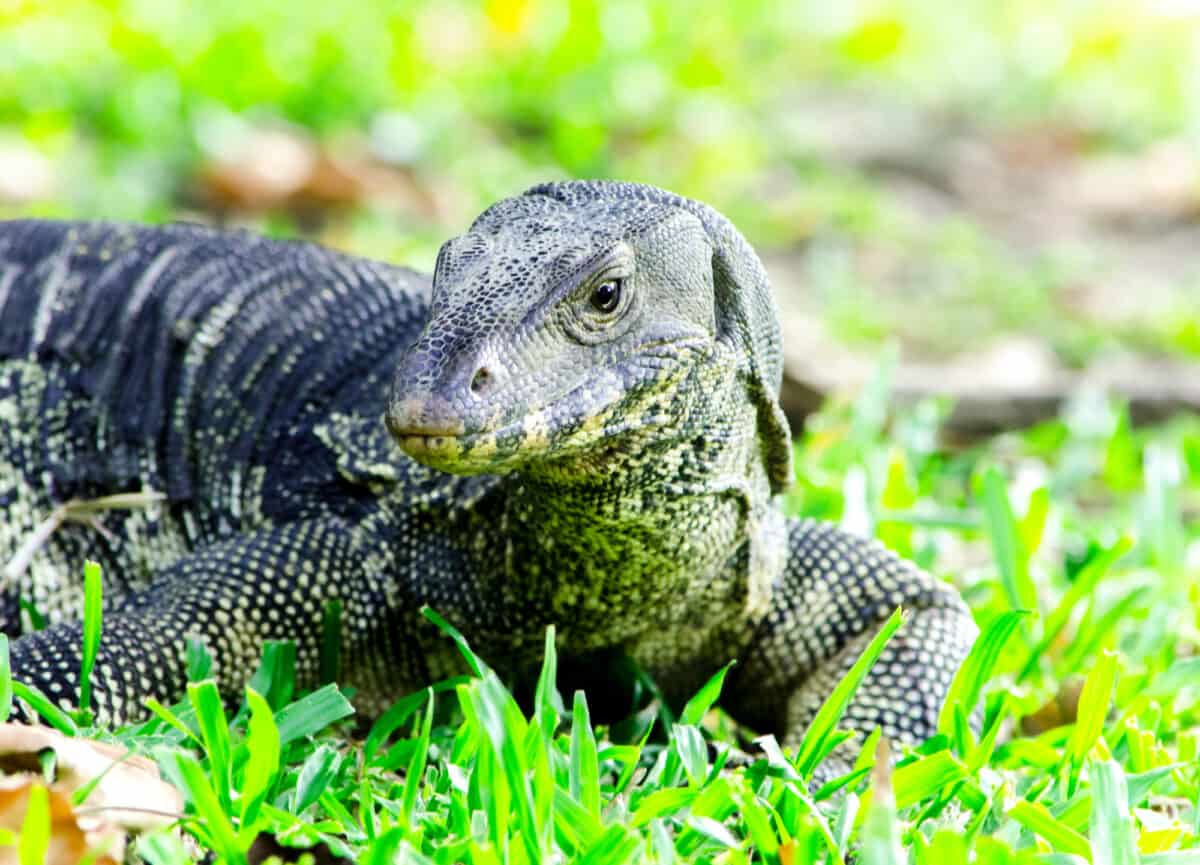
In a display of cannibalistic behavior, Komodo dragons readily consume smaller monitor lizard species and even juvenile members of their own kind. Smaller monitor lizards like the water monitor (Varanus salvator) and the mangrove monitor (Varanus indicus), weighing between 5-25 pounds, regularly become meals for adult Komodos. This interspecies predation demonstrates the opportunistic nature of these apex predators, who show little discrimination when it comes to potential food sources.
Young Komodo dragons face significant risks from larger adults, with cannibalism being a documented behavior in wild populations. This threat forces juvenile Komodos to adopt a more arboreal lifestyle for their first few years, spending much of their time in trees to avoid becoming meals for their larger relatives. The ability to swallow other monitor lizards whole is facilitated by the Komodo’s remarkably similar body shape, which slides easily down the predator’s throat with minimal resistance. This cannibalistic tendency may serve as a natural population control mechanism in environments with limited resources.
5. Deer: The Perfect-Sized Prey
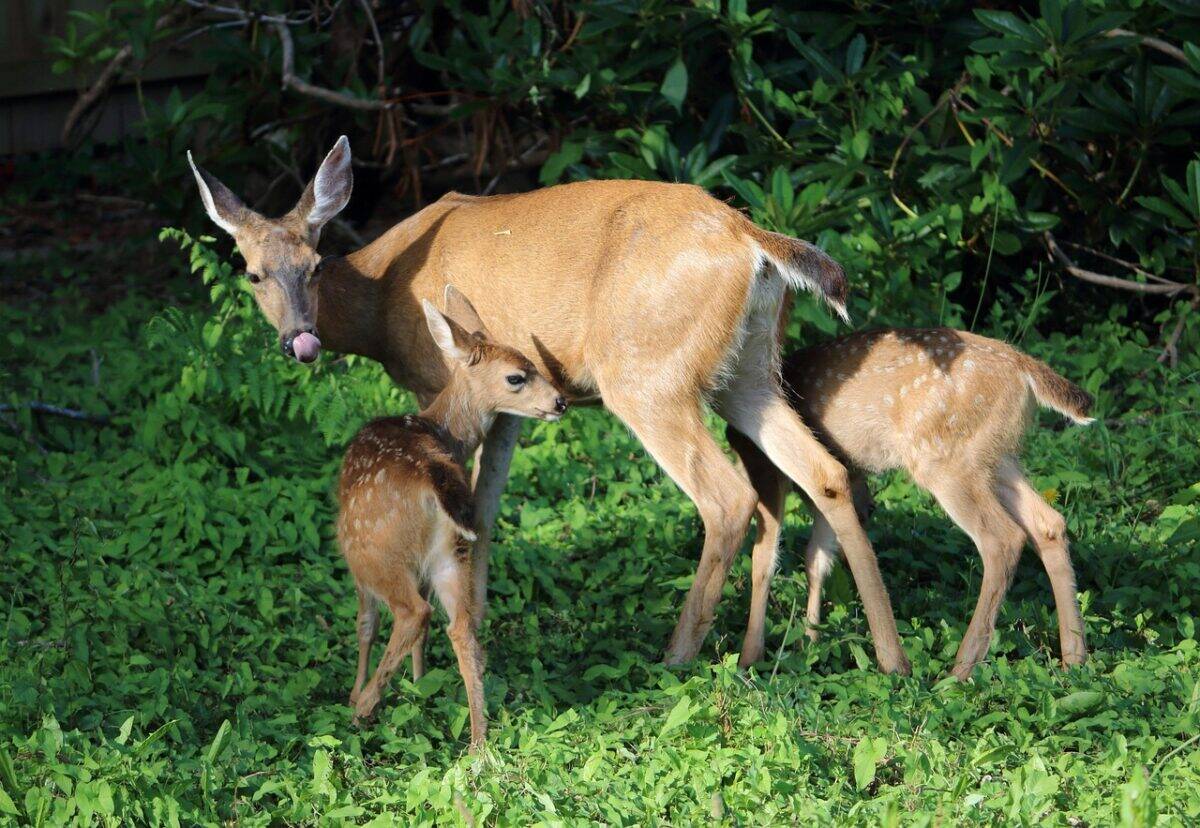
Various deer species, particularly the small native Timor deer (Cervus timorensis), represent prime targets for Komodo dragons. Young deer weighing up to 60 pounds can be consumed whole by large adult dragons. The hunting process typically involves stealth and ambush, with the Komodo delivering a devastating bite to the deer’s legs or underbelly before tracking the wounded animal until it succumbs to blood loss or bacterial infection. The dragon’s keen sense of smell allows it to follow injured prey for miles if necessary.
The consumption of deer showcases the Komodo’s remarkable jaw capabilities. Their specialized cranial anatomy includes multiple joints that allow for extraordinary expansion when swallowing large prey. X-ray studies of feeding Komodos have revealed that their skull temporarily deforms during the swallowing process, with ligaments stretching to accommodate the deer’s body. After consuming a whole deer, a Komodo dragon typically retreats to a sunny location where elevated body temperature accelerates the digestive process, allowing them to break down this substantial meal within 7-10 days.
6. Snakes: Predator Becomes Prey
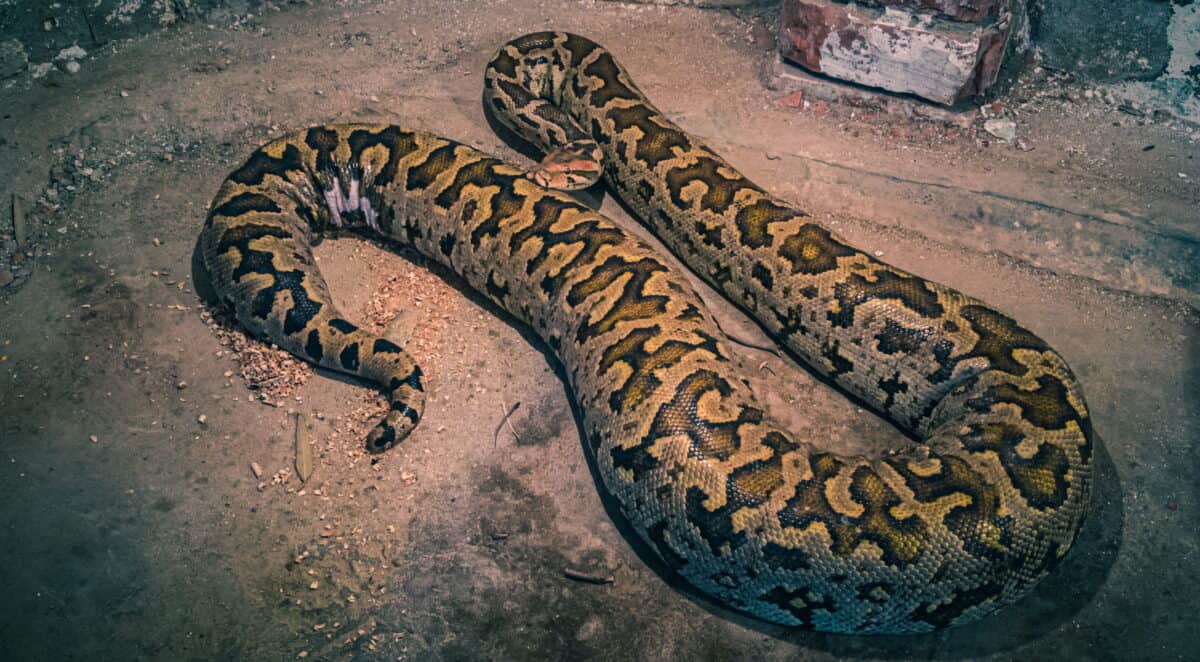
Despite their own predatory nature, various snake species become meals for opportunistic Komodo dragons. Even large pythons and cobras, measuring up to 6 feet long, can be consumed whole by adult Komodos. The dragon’s scaled hide provides some protection against venomous snakes, while their lightning-fast reflexes allow them to avoid defensive strikes. Once captured, the snake’s elongated body shape actually facilitates easier swallowing compared to bulkier prey of similar weight.
The consumption technique for snakes differs somewhat from other prey. Komodo dragons typically seize snakes behind the head, pinning them with their powerful forelegs before beginning the swallowing process. Their backward-facing teeth prevent the snake from escaping once the consumption begins. Interestingly, Komodo dragons appear immune to the venom of many local snake species, including the deadly king cobra, allowing them to prey on venomous species that other predators avoid. This immunity gives them access to a food source with limited competition from other predators in their ecosystem.
7. Marine Life: Coastal Hunting
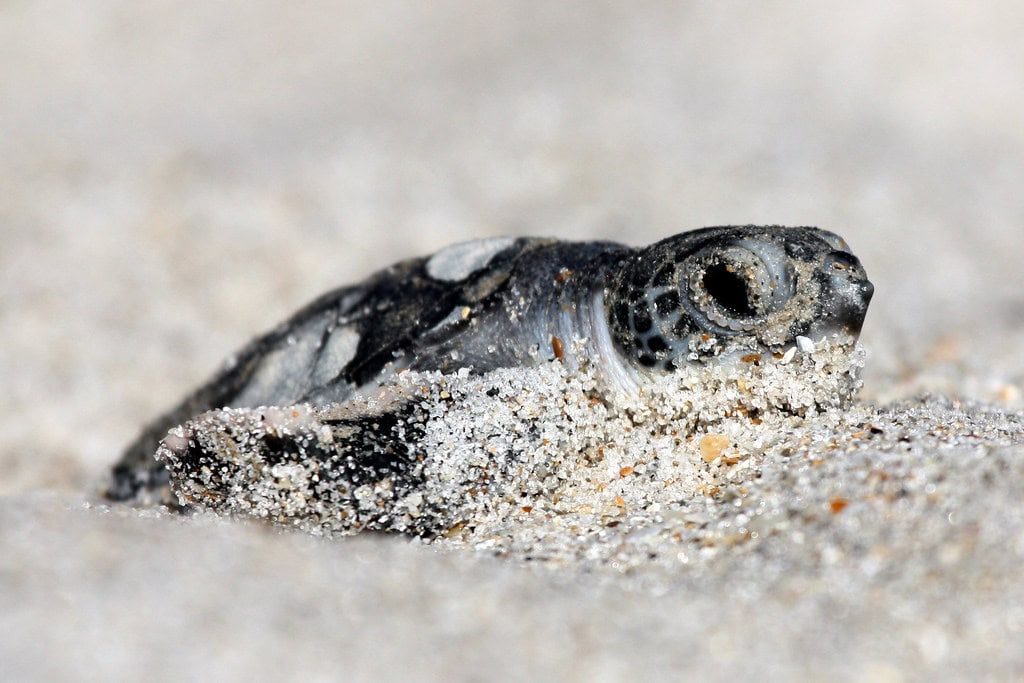
Komodo dragons residing near coastlines regularly hunt in shallow waters, capturing and consuming various marine creatures whole. Fish, crabs, and even small sea turtles become targets when they venture too close to shore. Adult Komodos have been observed wading into shallow lagoons where they use their long tails for balance while snapping up fish with remarkable accuracy. Their ability to hold their breath for several minutes allows them to partially submerge while hunting, creating an unexpected threat for marine life.
The consumption of marine prey demonstrates the Komodo’s dietary adaptability. Their digestive system efficiently processes the high-salt content of marine organisms without adverse effects. Young sea turtles, despite their protective shells, stand little chance when captured by Komodos. The powerful jaws and stomach acids of the dragon eventually break down even the hardest turtle shells over several days. This coastal hunting behavior tends to increase during seasonal fish migrations, when Komodos can be observed gathering along shorelines to capitalize on this abundant food source.
8. Birds: The Aerial Targets
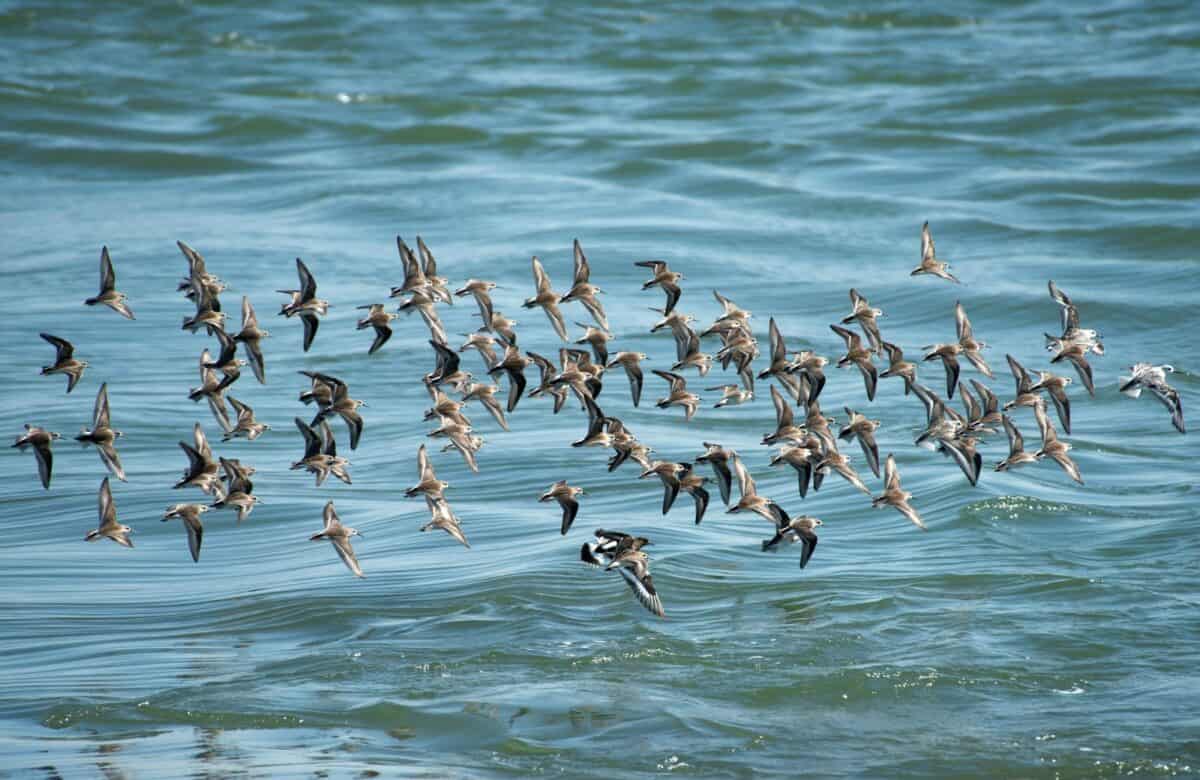
Ground-nesting birds and those that feed on the forest floor regularly fall victim to Komodo dragons. Various species of jungle fowl, megapodes, and even larger birds like cassowaries become targets when they’re within striking distance. Komodos display remarkable patience when hunting birds, remaining motionless beside nesting sites or feeding areas until an opportunity presents itself. Their earth-toned coloration provides effective camouflage against the leaf litter and underbrush where they lie in wait.
The consumption of birds is particularly efficient for Komodo dragons. The lightweight, hollow-boned structure of avian prey allows even medium-sized birds to be swallowed with minimal effort. Megapode birds, which build large nesting mounds, face double jeopardy as Komodos not only consume the adults but also raid their nests for eggs. Research indicates that birds comprise approximately 10% of the Komodo diet in certain island habitats, particularly during nesting seasons when ground-dwelling birds become more vulnerable due to their reproductive behaviors and limited mobility while protecting eggs.
9. Domestic Chickens: Easy Farm Targets

In areas where human settlements border Komodo habitat, domestic chickens represent easy prey that can be swallowed whole with minimal effort. Adult chickens weighing 4-8 pounds pose no challenge for even medium-sized dragons. The dragons are known to raid village coops and farms, sometimes consuming multiple chickens in a single feeding opportunity. Their ability to scale short walls and fences makes chicken enclosures particularly vulnerable unless specifically designed to exclude these resourceful predators.
This predation on domestic fowl has created ongoing conflicts between Komodo dragons and local communities. While chickens represent a minor portion of their natural diet, the easy accessibility of domestic birds can alter Komodo behavior, drawing them closer to human settlements and increasing human-wildlife conflict. Conservation efforts in Indonesia now include programs to help villagers construct dragon-proof chicken coops with elevated designs and metal barriers. Despite these challenges, the local communities generally maintain respectful coexistence with the dragons, recognizing their ecological importance and tourism value.
10. Rodents: Small But Nutritious Snacks
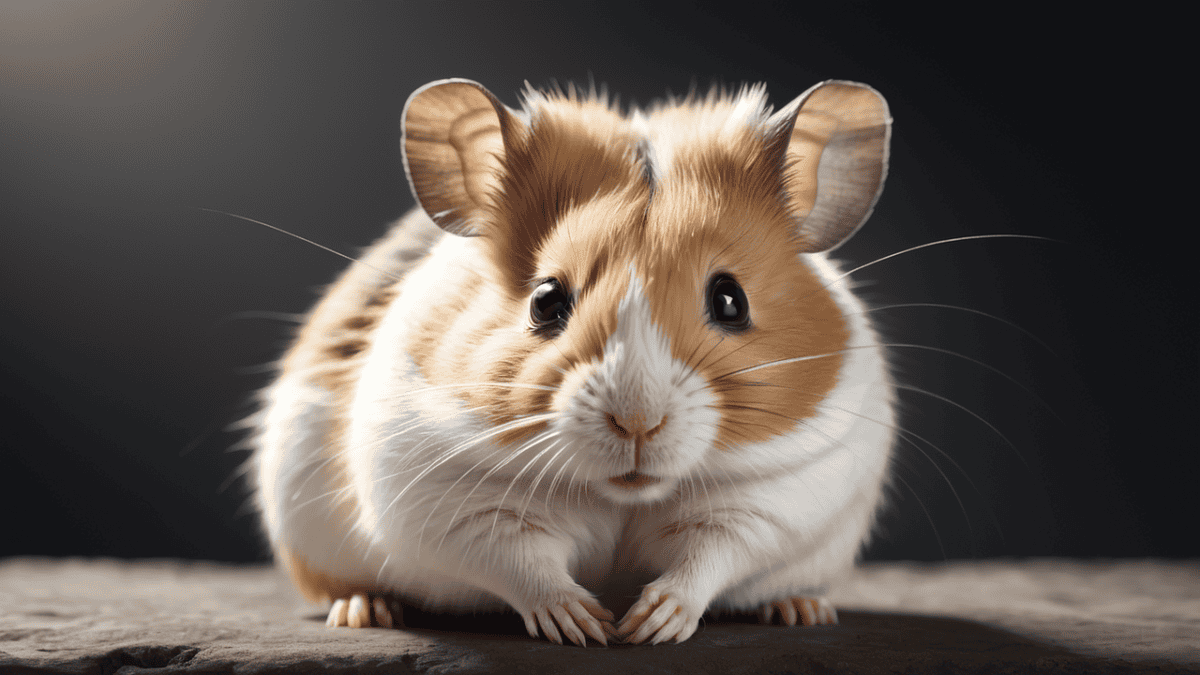
Various rodent species, from small field mice to larger rats and even the occasional porcupine, serve as convenient snacks that Komodo dragons can consume without effort. Young Komodos particularly rely on these smaller prey items, which provide excellent nutrition while posing minimal threat. Using their forked tongues to detect rodent pheromones, dragons can locate prey hiding in burrows or vegetation. Their patient hunting style involves minimal energy expenditure, often simply waiting beside rodent trails until an unsuspecting victim passes by.
The swallowing process for rodents happens almost instantaneously, with smaller specimens disappearing in a single gulp. Interestingly, Komodo dragons have been observed deliberately visiting areas recently burned by natural fires, where they feast on rodents fleeing the flames or exposed by the loss of cover. This opportunistic behavior demonstrates their cognitive ability to associate environmental changes with feeding opportunities. While rodents don’t provide the caloric payload of larger prey, their abundance makes them a reliable food source during periods when bigger prey is scarce.
11. Water Buffalo: The Fighters That Can Win
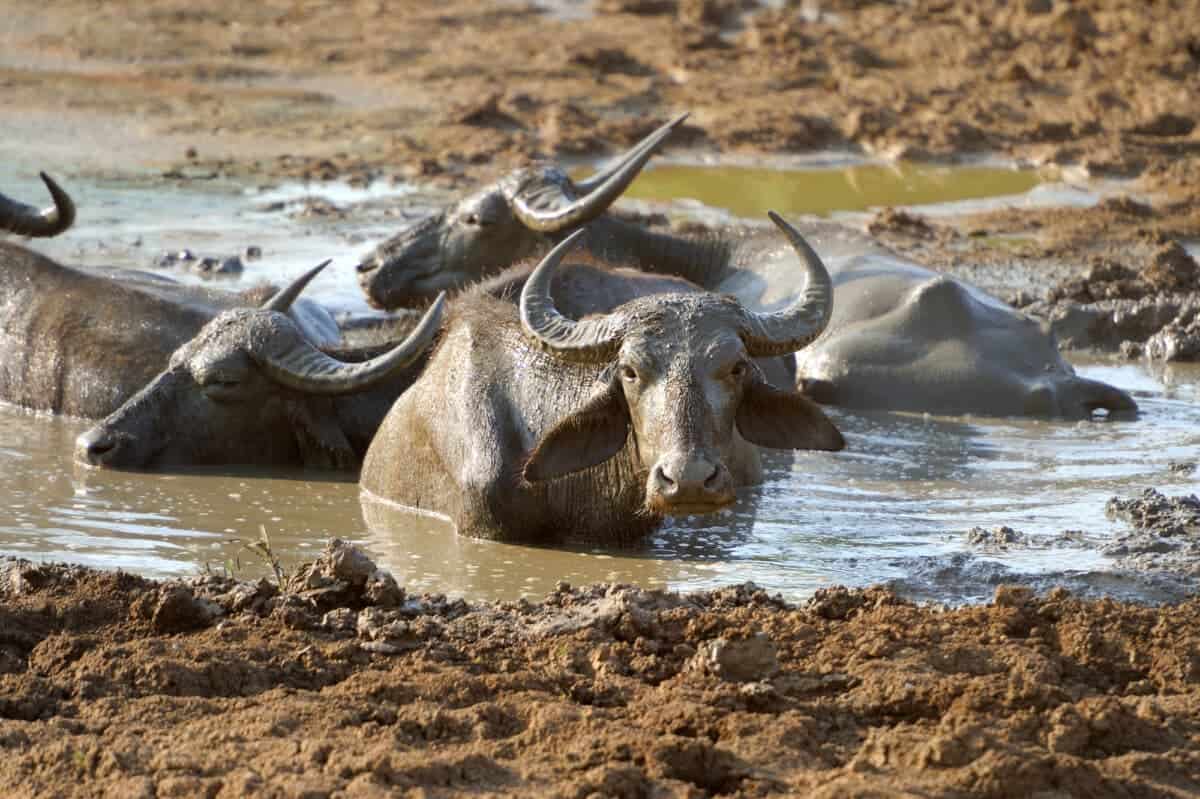
Adult water buffalo represent one of the few animals capable of effectively defending themselves against Komodo dragons. Weighing up to 2,000 pounds, these massive bovines possess formidable horns and exceptional strength that can deter or even kill attacking dragons. When threatened, water buffalo form defensive circles with calves protected in the center, presenting a wall of horns to potential predators. Their thick hides also provide substantial protection against the dragon’s initial bite, giving them a fighting chance that smaller prey lack.
Despite the buffalo’s defensive capabilities, Komodo dragons have evolved specialized hunting strategies for these formidable opponents. Rather than attempting to overpower adult buffalo directly, dragons often target isolated individuals, particularly the young, old, or sick. When attacking healthy adults, multiple dragons may coordinate their efforts, with several individuals inflicting wounds from different angles. Even with these tactics, adult water buffalo remain one of the few animals in the Komodo’s range that can successfully repel attacks and occasionally even kill dragons through goring or trampling. This deadly dynamic represents one of the most dramatic predator-prey relationships in the natural world.
12. Wild Boars: Armed With Natural Weapons
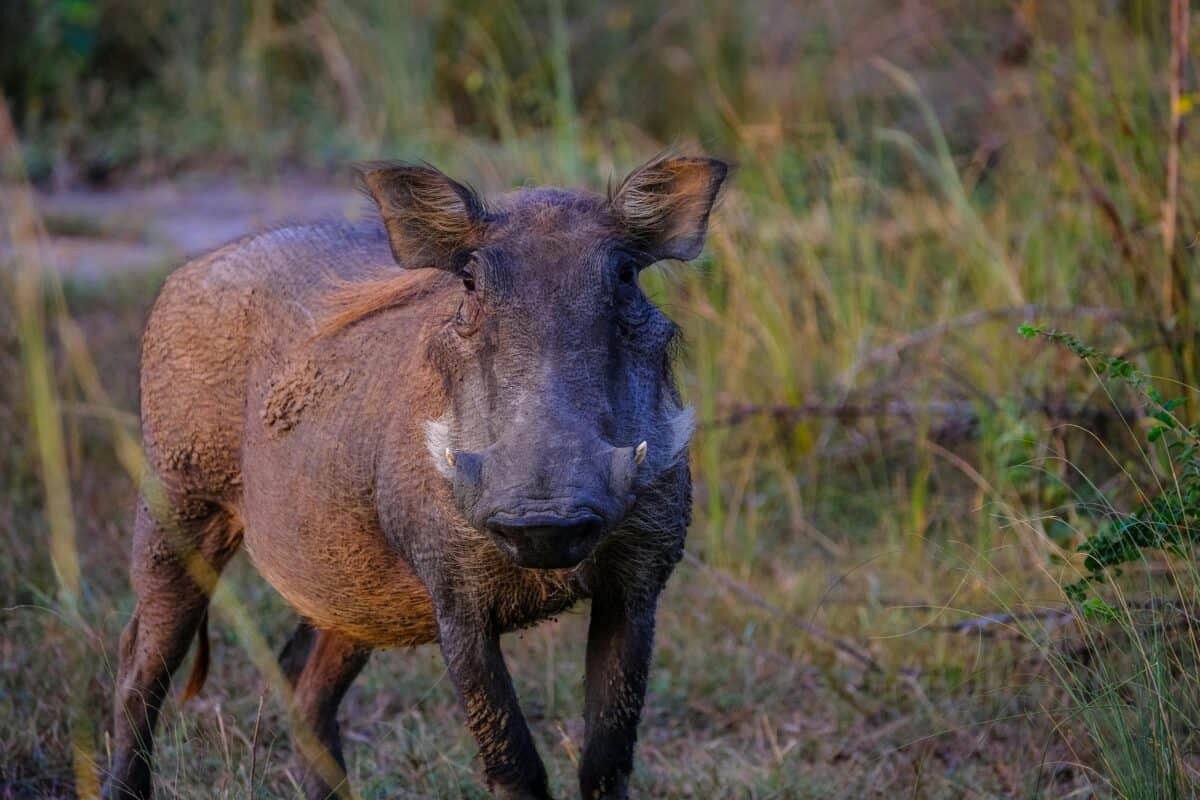
Adult wild boars, particularly males equipped with razor-sharp tusks, present a significant challenge to hunting Komodo dragons. While younger boars often fall prey, mature specimens weighing 150-200 pounds possess both the weapons and temperament to resist dragon attacks effectively. Their tusks, which can grow up to 5 inches long, serve as lethal defensive tools capable of inflicting serious wounds on attacking predators. Wild boars also demonstrate remarkable intelligence, often choosing escape routes through dense vegetation where the larger dragons struggle to maneuver effectively.
The confrontations between adult boars and Komodo dragons frequently result in standoffs or retreats by the predator. Researchers have documented numerous instances where wounded boars successfully fended off dragon attacks, using aggressive charges and slashing tusks to create distance. Boars also employ strategic defense, often backing against trees or rocks to protect their vulnerable rear quarters while facing down attackers. These defensive capabilities explain why Komodo dragons preferentially target juvenile boars or females without tusks when hunting this species. The relationship between these species represents a classic evolutionary arms race, with predator and prey continuously adapting to each other’s strategies.
13. Other Komodo Dragons: Cannibalistic Confrontations

Perhaps surprisingly, one of the most formidable opponents a Komodo dragon might face is another member of its own species. Adult Komodos regularly engage in territorial disputes and competition for resources that can escalate into violent confrontations. These battles involve powerful tail swipes, biting, and wrestling matches that showcase the remarkable strength these reptiles possess. While younger or smaller dragons typically flee from larger individuals, evenly matched adults will stand their ground, resulting in contests that can leave both participants wounded.
The cannibalistic nature of Komodo dragons creates a complex social dynamic within populations. Dominant individuals maintain territories through intimidation displays that include upright postures, hissing, and gular inflations that increase their apparent size. Smaller dragons develop acute awareness of larger individuals’ territories and movement patterns to avoid potentially fatal encounters. During mating season, male-to-male combat intensity increases dramatically as they compete for access to females. These intraspecies conflicts represent a significant cause of injury and mortality among adult dragons, demonstrating that one of the few creatures capable of effectively fighting a Komodo dragon is, in fact, another Komodo dragon.
14. Large Pythons: Serpentine Standoffs

While smaller snakes become easy meals, large reticulated pythons represent formidable opponents that can successfully defend against Komodo dragon attacks. Adult pythons exceeding 15 feet in length possess the muscular strength to constrict even large dragons if they manage to wrap around them. These encounters typically begin with mutual assessment, with both predators recognizing the potential danger the other represents. Pythons utilize their extraordinary striking speed—faster than a dragon’s reflexes—to establish initial advantage in confrontations.
When these apex predators clash, the outcome often depends on which lands the first effective strike. A python that successfully wraps its coils around a dragon’s body can exert crushing pressure that prevents breathing and circulation. Conversely, a dragon that secures a bite on the python’s head or neck gains immediate advantage. Field researchers have documented several instances where large pythons successfully repelled dragon …attacks, particularly when ambushed from concealment or when the Komodo failed to land a disabling bite early in the struggle. The python’s thick musculature and resistance to injury allow it to withstand non-lethal bites long enough to initiate a full constriction. In densely vegetated terrain, the python’s cryptic coloration and stealth may also offer a tactical edge, giving it the element of surprise in rare close encounters. These stand-offs are infrequent but highlight the unpredictable dynamics between two top-tier predators.
Despite these dramatic interactions, direct confrontations between reticulated pythons and Komodo dragons remain rare due to differing ecological niches and hunting preferences. Dragons are largely diurnal and rely on ambush and scavenging, while pythons are more nocturnal and solitary in their habits. However, in overlapping territories on islands like Flores, competition for similar prey—including deer, boar, and smaller reptiles—can occasionally force such confrontations. These rare clashes illustrate the complex balance of power in Southeast Asia’s predator hierarchy and demonstrate how even apex predators must constantly evaluate risk in a landscape where the hunter can also become the hunted.
Conclusion: Apex Power Meets Prey With a Plan

Komodo dragons are fearsome apex predators, equipped with serrated teeth, powerful jaws, and venomous bites that allow them to overpower and even swallow animals whole—ranging from birds and snakes to goats, monkeys, and smaller deer. Their slow, stalking style of hunting, followed by an explosive ambush, makes them one of the most effective terrestrial predators in their environment. When facing smaller or defenseless animals, the outcome is often swift and brutal.
Yet not all prey goes down without a fight. Wild boars, large monitor lizards, and water buffalo have been known to resist, injure, or even escape from Komodo attacks—proving that even apex predators face challenges. These encounters highlight nature’s constant push-and-pull between hunter and hunted, strength and strategy. In the end, the Komodo dragon’s diet tells a deeper story of survival, adaptability, and the delicate balance of power in one of Earth’s most rugged island ecosystems.
- This Jellyfish May Be Functionally Immortal—Here’s What We Know - August 10, 2025
- The Real Wildlife Behind the Great American Road Trip - August 10, 2025
- Top Volcano Trails Where You Might Spot Rare Wildlife - August 10, 2025

